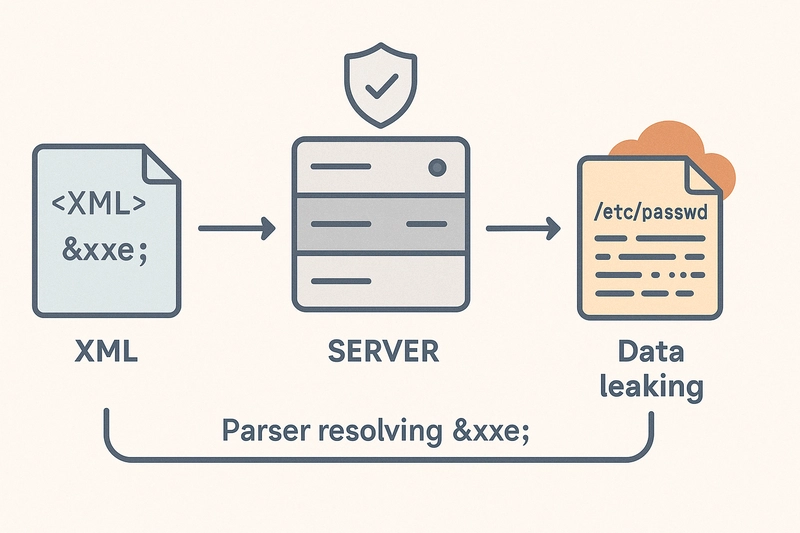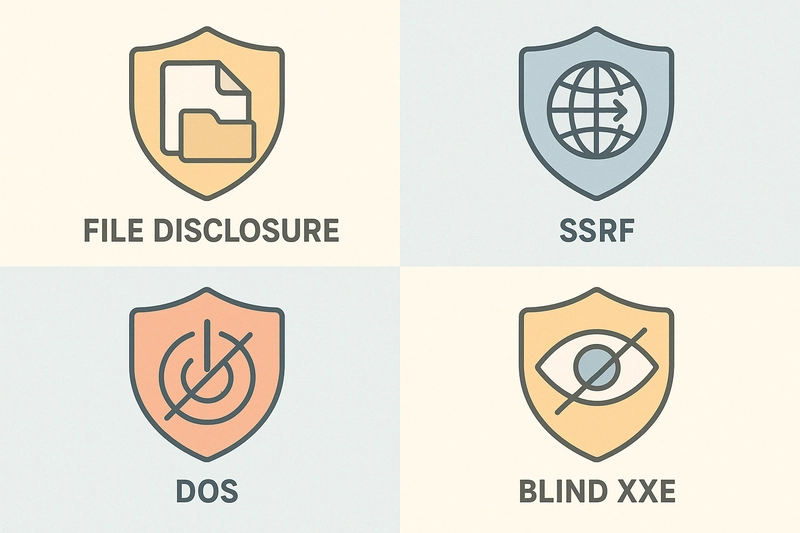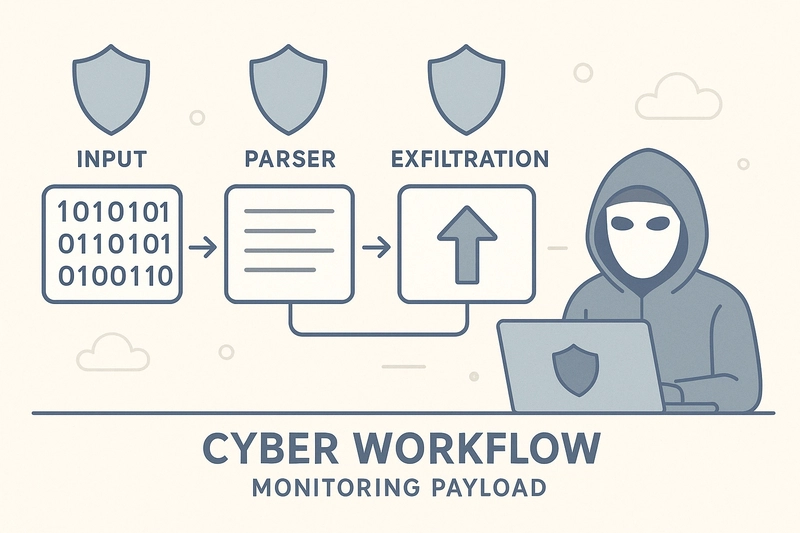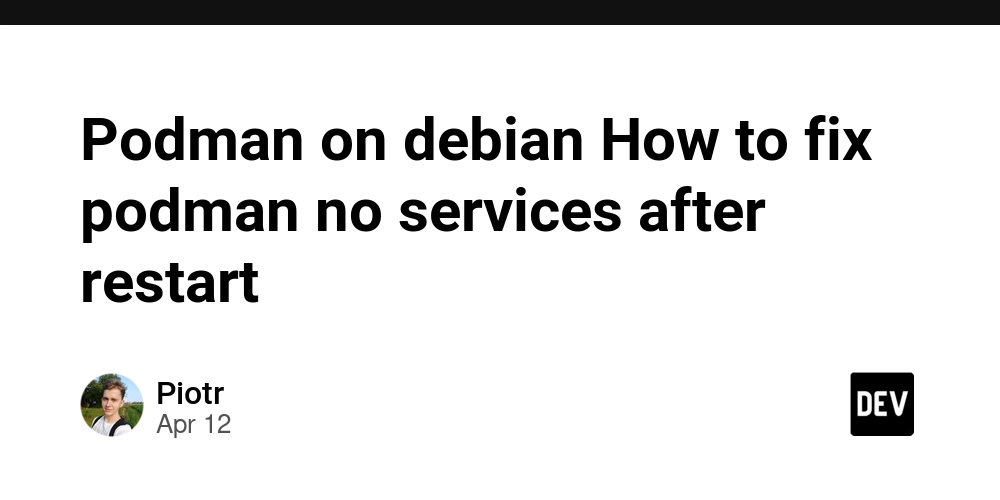The Billion Laughs Bomb
Introduction XML External Entity (XXE) attacks are not just theoretical they're dangerously real. If your application processes XML in any way API, file upload, or SOAP you may already be vulnerable. And many developers don’t even know it. In this article, I’ll walk you through how XXE attacks work, how attackers exploit them step-by-step, real-world examples, and how to secure your stack. This is your field guide to surviving the XXE wilderness. Understanding XXE Injection: The Fundamentals What is XXE? An XML External Entity (XXE) attack targets vulnerable XML parsers. It leverages the declaration and entities to access restricted files, perform internal HTTP requests, or even cause a Denial of Service. If your XML parser allows external entities (enabled by default in many platforms), attackers can use payloads like: ]> &xxe; Impact? Your server could unknowingly leak sensitive data, query internal services, or crash entirely. Key XML Concepts Document Type Definition (DTD): Declares rules and entities for the XML doc. Entities: Internal: Text substitution within XML. External: References to outside files or URLs (the core of XXE attacks). Parameter Entities: Used inside DTDs, key to advanced and blind XXE. The Real Problem: Weak Parsers Many parsers default to resolving DTDs. That’s like leaving the vault door ajar because the manual says it’s “a feature.” Types of XXE Attacks and Their Impacts 1. File Disclosure Impact: Attacker reads OS, app configs, credentials, or SSH keys. 2. Server-Side Request Forgery (SSRF) Impact: Access cloud instance metadata (AWS, Azure), scan internal services. 3. Denial of Service (DoS) Billion Laughs Payload: ... Impact: Crashes parser with exponential entity expansion. 4. Blind XXE (OOB or Error-Based) Out-of-Band (OOB): Reads file, sends contents to http://attacker.com Error-based: Triggers an error message that leaks the content How Hackers Exploit XXE – Step-by-Step Step 1: Locate XML Inputs Upload portals (.xml, .docx, .svg) SOAP APIs Hidden fields processed as XML Step 2: Test the Waters Inject a simple payload: ]> &xxe; Look for reflected data, errors, or strange delays (DoS). Step 3: Craft Exploits File read: file:///etc/shadow SSRF: http://localhost:8080/admin Blind XXE: Use external DTDs or DNS Step 4: Data Exfiltration Capture via attacker-controlled URL Observe logs for OOB requests Decode errors for leaked values Real-World Incidents IBM WebSphere: XXE enabled access to server-side files. SharePoint & DotNetNuke: File upload paths led to XXE vectors. PostgreSQL: Affected through XML import features. Even mature systems are vulnerable when DTD processing is left enabled. Vulnerable vs. Secure Code Snippets Java (Bad) DocumentBuilderFactory factory = DocumentBuilderFactory.newInstance(); Document doc = factory.newDocumentBuilder().parse(input); Java (Good) factory.setFeature("http://apache.org/xml/features/disallow-doctype-decl", true); PHP (Bad) $xml = simplexml_load_string($xmlInput); PHP (Good) libxml_disable_entity_loader(true); Mitigation Strategies Disable DTDs and external entity resolution Use schema validation (XSD) Sanitize XML input Patch your libraries regularly Use Web Application Firewalls and RASP Run apps with least privileges Conclusion XXE is not a bug—it’s a misuse of an XML feature. Most vulnerabilities arise from insecure defaults and developer unawareness. The fix? Proactively disable external entity parsing. Understand your parser. Test aggressively. Secure your apps before attackers secure your data. Disclaimer This blog is intended solely for educational and ethical learning purposes. Do not attempt to exploit systems without legal authorization. Always use these techniques in safe lab environments. Further Reading OWASP XXE Cheat Sheet PortSwigger Web Security Academy – XXE Synack: Deep Dive into XXE Cobalt: Executing XXE Attacks OWASP: XXE in Real-World Scenarios

Introduction
XML External Entity (XXE) attacks are not just theoretical they're dangerously real. If your application processes XML in any way API, file upload, or SOAP you may already be vulnerable. And many developers don’t even know it.
In this article, I’ll walk you through how XXE attacks work, how attackers exploit them step-by-step, real-world examples, and how to secure your stack. This is your field guide to surviving the XXE wilderness.
Understanding XXE Injection: The Fundamentals
What is XXE?
An XML External Entity (XXE) attack targets vulnerable XML parsers. It leverages the
If your XML parser allows external entities (enabled by default in many platforms), attackers can use payloads like:
]>
&xxe;
Impact? Your server could unknowingly leak sensitive data, query internal services, or crash entirely.
Key XML Concepts
Document Type Definition (DTD): Declares rules and entities for the XML doc.
-
Entities:
- Internal: Text substitution within XML.
- External: References to outside files or URLs (the core of XXE attacks).
- Parameter Entities: Used inside DTDs, key to advanced and blind XXE.
The Real Problem: Weak Parsers
Many parsers default to resolving DTDs. That’s like leaving the vault door ajar because the manual says it’s “a feature.”
Types of XXE Attacks and Their Impacts
1. File Disclosure
Impact: Attacker reads OS, app configs, credentials, or SSH keys.
2. Server-Side Request Forgery (SSRF)
Impact: Access cloud instance metadata (AWS, Azure), scan internal services.
3. Denial of Service (DoS)
Billion Laughs Payload:
...
Impact: Crashes parser with exponential entity expansion.
4. Blind XXE (OOB or Error-Based)
Out-of-Band (OOB): Reads file, sends contents to
http://attacker.comError-based: Triggers an error message that leaks the content
How Hackers Exploit XXE – Step-by-Step
Step 1: Locate XML Inputs
Upload portals (.xml, .docx, .svg)
SOAP APIs
Hidden fields processed as XML
Step 2: Test the Waters
Inject a simple payload:
]>
Look for reflected data, errors, or strange delays (DoS).
Step 3: Craft Exploits
File read:
file:///etc/shadowSSRF:
http://localhost:8080/adminBlind XXE: Use external DTDs or DNS
Step 4: Data Exfiltration
Capture via attacker-controlled URL
Observe logs for OOB requests
Decode errors for leaked values
Real-World Incidents
IBM WebSphere: XXE enabled access to server-side files.
SharePoint & DotNetNuke: File upload paths led to XXE vectors.
PostgreSQL: Affected through XML import features.
Even mature systems are vulnerable when DTD processing is left enabled.
Vulnerable vs. Secure Code Snippets
Java (Bad)
DocumentBuilderFactory factory = DocumentBuilderFactory.newInstance();
Document doc = factory.newDocumentBuilder().parse(input);
Java (Good)
factory.setFeature("http://apache.org/xml/features/disallow-doctype-decl", true);
PHP (Bad)
$xml = simplexml_load_string($xmlInput);
PHP (Good)
libxml_disable_entity_loader(true);
Mitigation Strategies
Disable DTDs and external entity resolution
Use schema validation (XSD)
Sanitize XML input
Patch your libraries regularly
Use Web Application Firewalls and RASP
Run apps with least privileges
Conclusion
XXE is not a bug—it’s a misuse of an XML feature. Most vulnerabilities arise from insecure defaults and developer unawareness.
The fix? Proactively disable external entity parsing. Understand your parser. Test aggressively.
Secure your apps before attackers secure your data.
Disclaimer
This blog is intended solely for educational and ethical learning purposes. Do not attempt to exploit systems without legal authorization. Always use these techniques in safe lab environments.









































































































































































![[The AI Show Episode 144]: ChatGPT’s New Memory, Shopify CEO’s Leaked “AI First” Memo, Google Cloud Next Releases, o3 and o4-mini Coming Soon & Llama 4’s Rocky Launch](https://www.marketingaiinstitute.com/hubfs/ep%20144%20cover.png)




























































































































![[DEALS] The All-in-One Microsoft Office Pro 2019 for Windows: Lifetime License + Windows 11 Pro Bundle (89% off) & Other Deals Up To 98% Off](https://www.javacodegeeks.com/wp-content/uploads/2012/12/jcg-logo.jpg)



























![Is this too much for a modular monolith system? [closed]](https://i.sstatic.net/pYL1nsfg.png)






















































































































_Andreas_Prott_Alamy.jpg?width=1280&auto=webp&quality=80&disable=upscale#)
































































































![What features do you get with Gemini Advanced? [April 2025]](https://i0.wp.com/9to5google.com/wp-content/uploads/sites/4/2024/02/gemini-advanced-cover.jpg?resize=1200%2C628&quality=82&strip=all&ssl=1)













![Apple Shares Official Trailer for 'Long Way Home' Starring Ewan McGregor and Charley Boorman [Video]](https://www.iclarified.com/images/news/97069/97069/97069-640.jpg)
![Apple Watch Series 10 Back On Sale for $299! [Lowest Price Ever]](https://www.iclarified.com/images/news/96657/96657/96657-640.jpg)
![EU Postpones Apple App Store Fines Amid Tariff Negotiations [Report]](https://www.iclarified.com/images/news/97068/97068/97068-640.jpg)
![Apple Slips to Fifth in China's Smartphone Market with 9% Decline [Report]](https://www.iclarified.com/images/news/97065/97065/97065-640.jpg)







































































































































